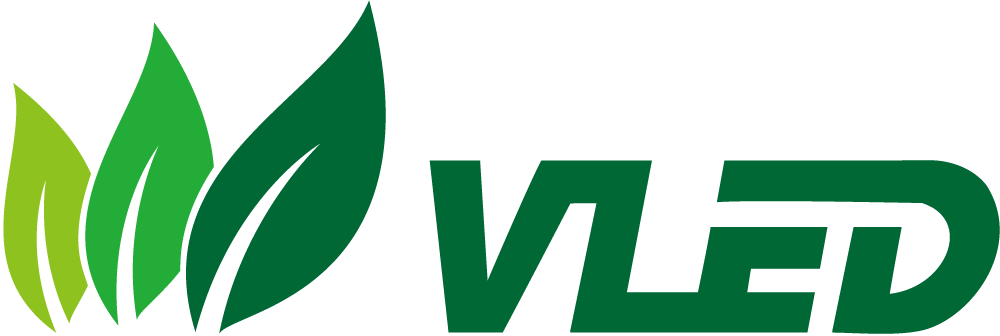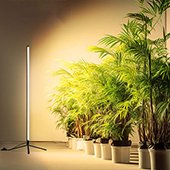Menu
The Invisible Costs: How Inferior LED Plant Lights
Steal Your Profits?
Table of Contents
In modern indoor farming and commercial greenhouses, LED plant lighting has become an indispensable key equipment. However, some growers only focus on the initial purchase price of LED plant lights and tend to overlook those invisible costs.
For commercial growers, the hidden costs of lighting equipment are often more fatal than the initial purchase price. Inferior LED lights may seem to save money in the short term, but problems such as light decay, flicker, and short lifespan will continue to erode profits.
Here, I will analyze this issue from three core aspects and take the quantum panel LED grow light as an example to see how it reduces these hidden losses.
The Trap of Light Decay
The Profit Killer Behind the Decline in Light Efficiency
You may have noticed that newly installed LED plant lights perform well in terms of brightness during the first few months, but soon you find the lights getting dimmer and dimmer. This is the problem of light decay.
Many inferior LED grow lights exhibit a noticeable decline in light efficiency after a period of use, resulting in plants receiving far less light energy than the design requirements.
- Inferior LED Lights: Typically, after 3 years of use, their light efficiency can decline by up to 20%. This means the originally sufficient light has been significantly reduced, directly affecting the photosynthesis and growth efficiency of crops.
- Quantum Panel: With advanced heat dissipation design and high-quality LEDs, the light decay after 3 years is less than 5%. It has almost maintained the initial high-efficiency output.

The Impact of Light Decay on Crop Growth and Yield
Insufficient Light
Crops are highly sensitive to light. Prolonged exposure to sub-optimal light levels can lead to reduced photosynthesis efficiency, thereby affecting the growth rate and yield of plants.
Economic Loss
The decline in light efficiency not only affects the quality of crops but may also require growers to invest more time and resources for remediation in the later stages, or even result in failure to meet the expected market standards.
Hidden Losses
Plant Stress Response Triggered by Flicker
Beyond light decay, inferior LED lights often have an inconspicuous issue—flicker. Simply put, the lights flicker on and off. Although this may not be easily detected by the naked eye, plants are highly sensitive to such unstable light sources.
- Stress Response: Abnormal opening and closing of leaf stomata, reduced CO₂ absorption efficiency, and decreased photosynthesis rate.
- Growth Deformities: Thin and weak stems, yellowing leaves (such as curled inner leaves of lettuce, uneven coloring of tomato fruits).
- Data Support: Research from Michigan State University in the United States shows that in a lighting environment with flicker exceeding 5%, crop yield can decrease by 10%-15%.
At the same time, the flicker problem of inferior products invisibly plants hidden dangers for growers, causing considerable economic losses.
The color temperature and spectral ratio of ordinary LED lights drift with voltage fluctuations (such as a deviation of ±10% in the red-blue light ratio), directly affecting the physiological rhythm of crops.
A strawberry farm suffered a 7-10 day delay in flower bud differentiation due to spectral imbalance, missing the high-price window period.
Quantum Panel Solutions
- Constant Current Drive Technology: Maintains spectral stability even with voltage fluctuations (flicker rate <1%, invisible to the naked eye).
- Independent Switches:
The Quantum Panel features a design with independent switches for UV and IR lights, allowing for localized adjustment based on actual needs. This enables precise control, avoiding unnecessary energy waste. For global commercial growers and the horticultural wholesale market, this solution is undoubtedly a booster shot, providing growers with higher profit guarantees and more stable product quality.




Replacement Cost
The Hidden Expenses Caused by Frequent Equipment Replacement
Inferior LED plant lights not only experience rapid light decay and frequent flickering but are also prone to malfunctions.
As a result, you are forced to replace the equipment frequently. Each replacement not only requires new capital investment but also takes time for installation and adjustment, and may even affect the planting cycle.
These additional replacement costs may seem insignificant, but over time, they will seriously erode your profits.
High-frequency Replacement of Traditional Tubes
Initial Purchase Price: Ordinary LED tubes have a low unit price (e.g., $20 per tube), but their lifespan is only 1-2 years.
Replacement Frequency: Taking a 10,000 square meter greenhouse as an example, 500 tubes need to be installed, with about 250 tubes replaced each year, and an annual maintenance cost of about $5,000.
Hidden Losses: During replacement, production needs to be stopped for 3-5 days. Calculated at a daily output of 1,000, the annual downtime loss is about $15,000.
Total Cost in 5 Years: 20/tube × 500 tubes × 4 replacements + $15,000 downtime loss = $65,000.
Advantages of Quantum Panel Single Investment
With a unit price of $400 per Quantum Panel and a lifespan of 10 years, only 20 units are needed for 10,000 square meters.
Zero Maintenance Cost: No need to replace the light beads within 10 years, saving $5,000/year in maintenance costs.
Additional Revenue: Due to spectral stability and long lifespan, the cumulative yield increase over 5 years brings in revenue exceeding $100,000 (calculated at an annual increase of 10%).
Total Cost Comparison: Traditional plan costs $65,000 in 5 years vs. Quantum Panel costs $8,000 in 5 years (equipment cost + $0 maintenance cost), saving 88%.
Are Quantum Panel Grow Lights Worth It?
The cumulative light damage caused by inferior LED lights erodes the farm’s profits like a chronic disease. Faced with these invisible costs, it is worth pondering your investment decisions.
Perhaps spending a bit more money on higher-quality LED plant lights can prevent various hidden losses caused by light decay, flicker, and frequent equipment replacement in the future.
Quantum panel, with its high stability in light efficiency, zero maintenance design, and precise spectral control, helps growers convert “invisible costs” into visible profit growth points.
For commercial growers pursuing sustainable profitability, this is a technology worthy of long-term investment. After all, a stable planting environment and sufficient light are the keys to a bountiful harvest.
Get in touch with us!
From custom light planning, to tailored quotes, and everything in between, our team of horticulture experts are always ready to assist.




